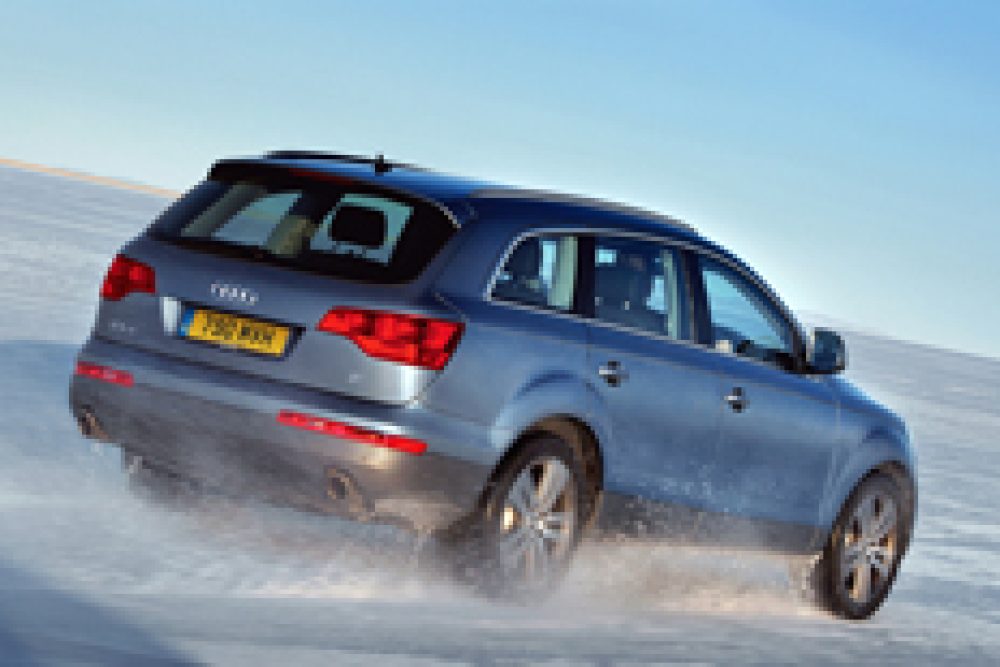 By Iain Carmichael, head of fleet sales, Audi
By Iain Carmichael, head of fleet sales, Audi
IT looks like the snow and icy conditions are here to stay across the UK.
As we all know, in winter road conditions are from ideal – so here are a few tips on staying safe, and keeping your business car running smoothly and safely during this wintry weather.
Before you leave the office or your house
Only use your car if you absolutely have to. If you must use your car, plan the journey. Check the RAC Route Planner, for example, or consult an up-to-date roadmap.
Tell friends or family where you’re going, which route you’re taking and when you expect to arrive.
Bring a fully-charged mobile phone with you, while a key de-icer is always useful to access any frozen locks.
It’s also worth keeping the following items in your car, just in case you break down: a torch; a blanket; an ice-scraper; suitable shoes or boots; and a de-icer of some sort. A flask with a hot drink might also come in handy on longer journeys – especially important in more remote regions.
Before you drive off
Do not be tempted to set off if you haven’t completely de-iced your windscreen and lights. Driving with just a small hole cut in the ice isn’t just dangerous – it’s illegal. But don’t use hot water to clear your windows. The sudden change in temperature might crack the glass – and that will add to the problems with which you have to contend.
Make sure you have enough fuel for your journey, bearing in mind that you may get stuck in traffic due to the wintry weather.
Basic checks: the battery
- Battery connections should be tight and corrosion-free
- If not, the battery may need replacing.
- If your car is having trouble starting, that could be a sign you need a new battery.
- If in doubt, your local dealer or garage can check it.
Basic checks: the tyres
Check the pressure of all your tyres, including the spare. You can usually find the correct specification in one or more of the following locations:
- On a sticker on the driver’s door pillar.
- On the inner side of the fuel flap.
- In the owner’s handbook.
Check the tread depth of your tyres. The legal minimum for cars is 1.6mm, but deeper tread depth will give you better grip in the snow. There will also be tread limit markers in the grooves of each tyre. If these markers are flush with the tread you’ll need to replace the tyre.
Consider fitting winter tyres (sometimes called cold weather tyres). These are available from both your car dealer and some fast fit outlets – check prices, too, because these vary.
Basic checks: the screen wash system
It’s crucial that you use the correct screen wash additive, especially in colder weather. This will help reduce the effects of freezing. Check the instructions on the bottle for concentration levels against predicted temperatures.
You can also buy a premix screen wash solution that has already been diluted correctly. If you choose this option make sure you always top up with the premix solution – do not dilute it with water as this will reduce its effectiveness.
Remember: the washer system can still freeze, even if you have heated washer jets.
Basic checks: the windscreen wipers
Check front and rear wiper blades for signs of wear or splitting.
If you do blow the wipers’ fuse, you can usually find its location by checking your owner’s handbook or the sticker attached to the fuse box’s inner cover. If you aren’t sure, seek professional advice.
Basic checks: the cooling system
Anti-freeze should be added to your vehicle’s cooling system according to the manufacturer’s specification.
If the cooling system warning light is illuminated switch off the engine immediately and check how much coolant there is in the reservoir. If it’s below the minimum level you’ll need to top it up. Always do so with the correct antifreeze solution as per manufacturing specification. Never top up with just water – this will reduce the system’s effectiveness. Again, seek professional advice if you are unsure.
Out on the road
A dip in your concentration levels can have disastrous consequences. Keep your car well ventilated and take regular breaks to prevent drowsiness.
Keep an eye out for gritting lorries and snowploughs. Pedestrians may also be walking on the road to avoid slippery pavements, so adjust your speed accordingly. Increase your distance from the vehicle in front when driving on snow or ice-covered roads.
Electronic safety systems (ABS & ESP)
When driving in slippery conditions it’s not unusual for the ESP (anti-skid system) and ABS (anti-lock brake) systems to activate to help you control the vehicle. The ESP/ABS light will flash on your dashboard to let you know.
Even with ESP/ABS, stopping distances may not be reduced when braking on ice or snow, so maintaining an increased distance from the vehicle in front is still paramount.
When ABS is activating it will produce a pulsing sensation through the braking pedal. Don’t worry; this is completely normal. It may also be accompanied by a slight buzzing noise. The ABS light will not illuminate while this is happening.
Further information
If you would like to read more about the benefit of winter tyres (cold weather tyres) then read this article in our Ask the Experts section What are cold weather tyres?
There’s also the Editor’s Blog on his experience of winter tyres fitted to his Audi A6 Audi gets its snow boots on.








